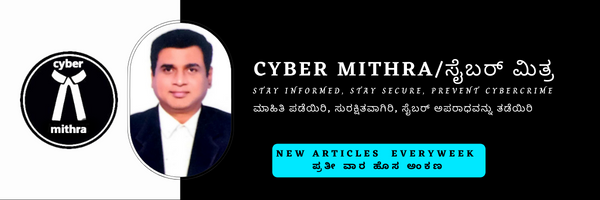Cybercrimes targeting Women and Girls – Part 2
From last week, I have been writing about various cybercrimes done on women and girls, how they work, how one can protect oneself from it and what legal or other remedies are available to the victims. Last week, I discussed about cyber stalking, cyber defamation and cyber harassment cybercrimes. This week, I will discuss voyeurism and revenge pornography cyber crimes. In my previous articles, I had discussed in detail about sextortion, deep fakes and Identity theft cybercrimes before in my articles, please check them out for further details.
How these cybercrimes against women and girls are carried out :-
- Voyeurism : Voyeurism in simple terms can be termed as an intrusion into someone’s privacy without their consent by way of observing someone secretly performing intimate acts such as undressing, sexual activity and obtaining pleasure out of it. This includes observing, capturing or distributing images of another person in private situation without their consent or knowledge. With advancement in technology, cameras, smartphones etc. may be placed in public places like changing rooms, where individuals generally expect a reasonable degree of privacy leading to cyber or digital voyeurism cybercrime. Motive for such cybercrime may include jealousy, obsession, revenge or hatred.
- Revenge pornography : Revenge porn or revenge pornography is the distribution of sexually explicit images or videos of individuals to bring disgrace and damage their reputation. The sexually explicit images or videos may be made by a partner of an intimate relationship with or without the knowledge and consent of the subject. The possession of the material may be used by the perpetrators to blackmail the victim into performing sexual acts or to coerce them into continuing a relationship or to punish them for ending the relationship or to threaten them. Motive for such cybercrime may include jealousy, obsession, revenge, hatred or to humiliate and intimidate the victim.
How to protect oneself from such cybercrimes :-
- Keep your social media profile locked or private.
- Do not accept friend requests without proper checking their background.
- Do not share your personal and sensitive information including pictures of where you travel or your loved ones in public space, if you want to share with known friends and family only.
- Protect your private pictures and videos and delete all the copies of it as soon as you get separated.
- Use good antivirus and a firewall software.
- Do not share your location or travel plans in public.
- Do not respond to strangers messages and block immediately if you are suspicious of them.
- Never, try to meet a person with whom you’ve interacted only online without taking somebody else along and such meeting must always be in a public place.
- Always use strong passwords and keep changing them often.
If you are a victim of such cybercrime :-
Immediately call 1930 cyber helpline or file a complaint at cybercrime.gov.in. Complain to the relevant authority or social media website about such fraudsters and the fraud. Block that user but do not delete any information, instead save them as they will be needed as evidence to prosecute the criminal. If you had installed any software or clicked a hyper link or scanned a QR code provided by fraudster, then uninstall that software, change the passwords/pins of all your important accounts like banking, email etc. Best is to factory reset or format your device as your antivirus may also sometimes fail to find the malware.
Remedies available to victim legally(India) :-
Lodge a complaint at nearby cyber or regular police station under :
- Section 354 A to D(online abuse or crimes against women in cyberspace), Section 378(Theft), Section 424(extract data illegally), Section 441(criminal trespass), Section 499(defamation), Section 500(punishment for slander), Section 503(Threats to harm a person’s reputation), Section 507(Criminal Intimidation), Section 509(Insult privacy and modesty) of Indian Penal Code(IPC)
- Section 43 (Penalty and compensation for damage to computer, computer system, etc), section 66 (punishment for computer related offences – data theft, transmitting virus into a system, destroying data, hacking, or denying access to the computer or network to an authorized person), section 66C(penalties for identity theft and states that anyone who fraudulently or dishonestly uses a person’s identity information), Section 66D (punishment for fraud by impersonation using computer resources), Section 67(publish, transmit, or cause the distribution of obscene content), and Section 67A(publishing, transmission, or facilitating the transfer of sexually explicit content) of The Information Technology Act 2000/08
- Other than this relevant sections from The Immoral Traffic Prevention Act,1956 and Protect children from sexual abuse (POCSO) Act,2012.

